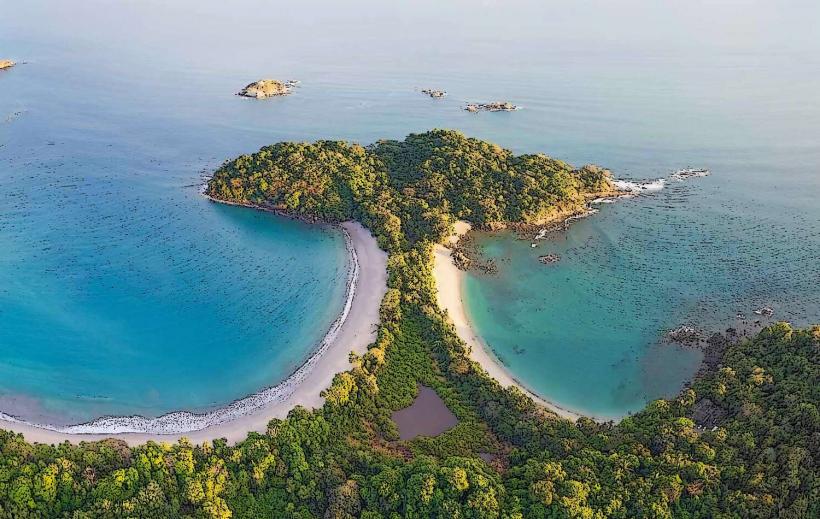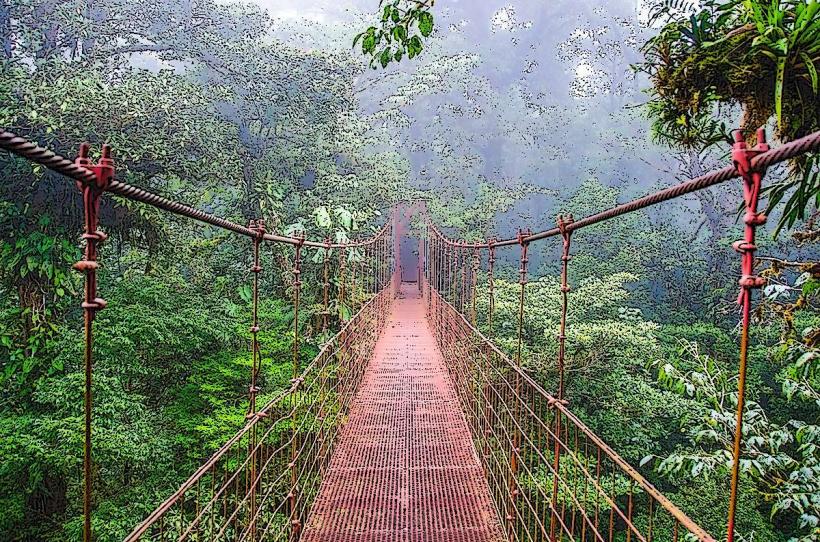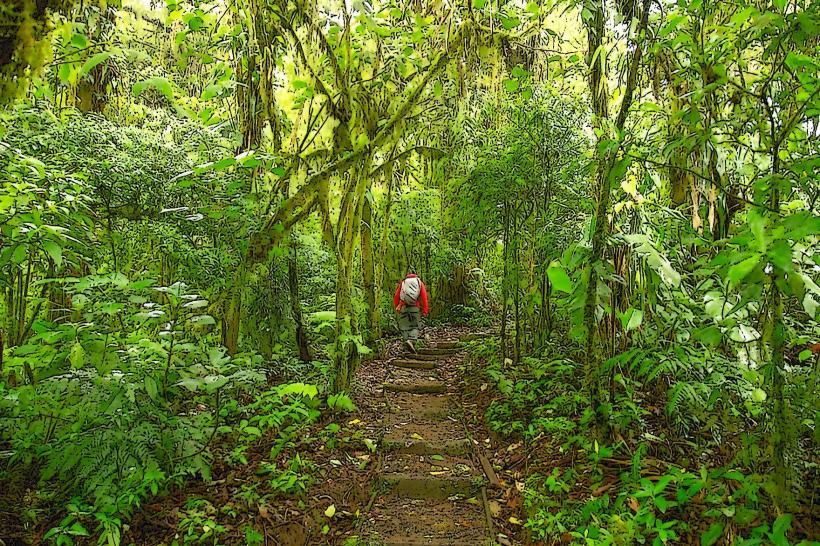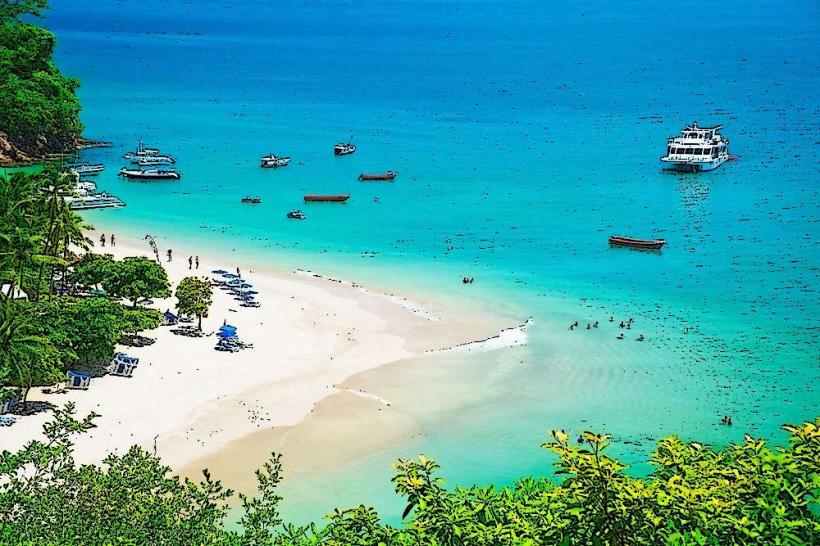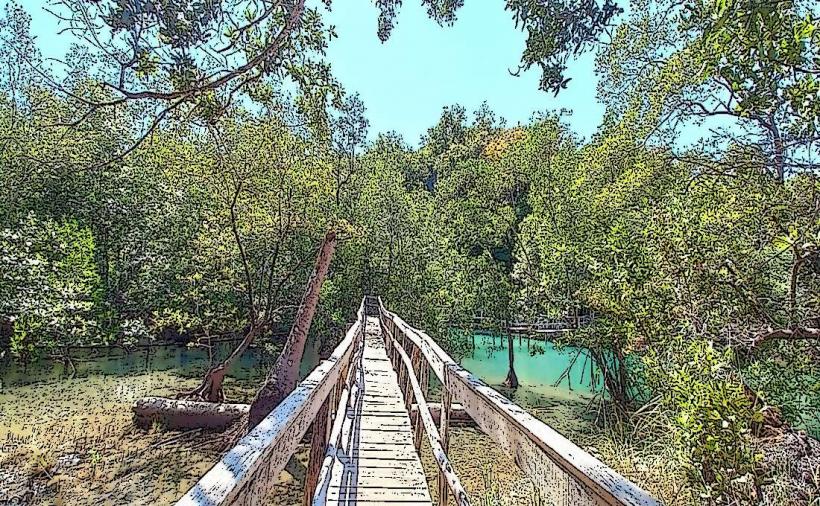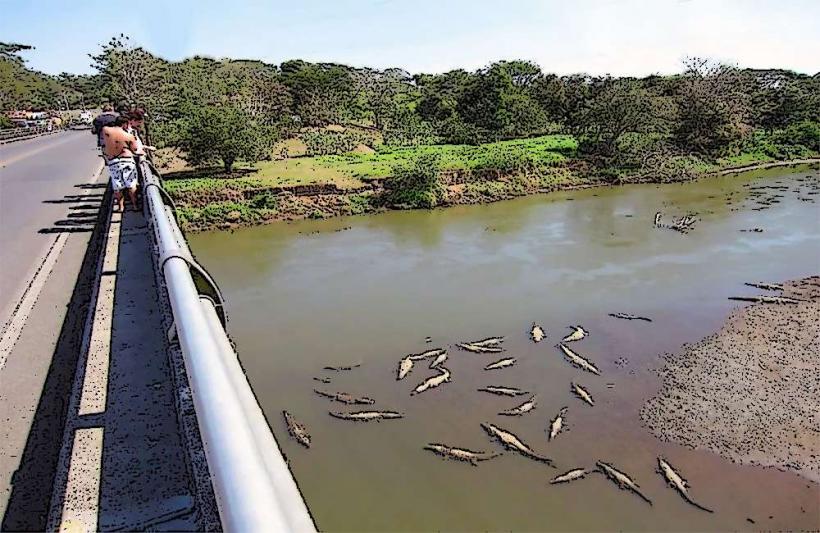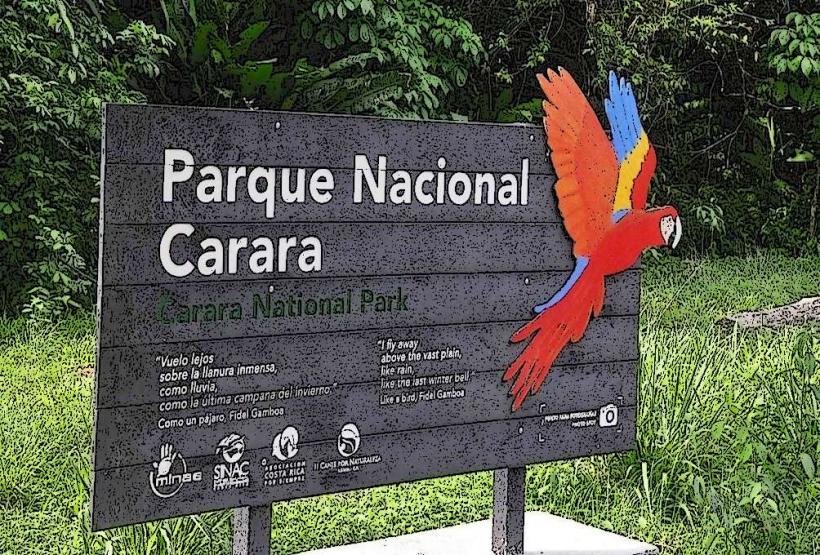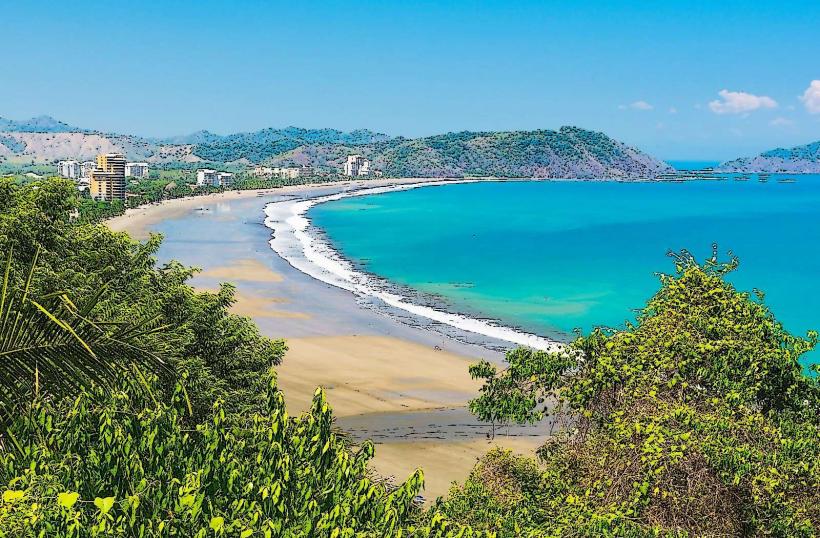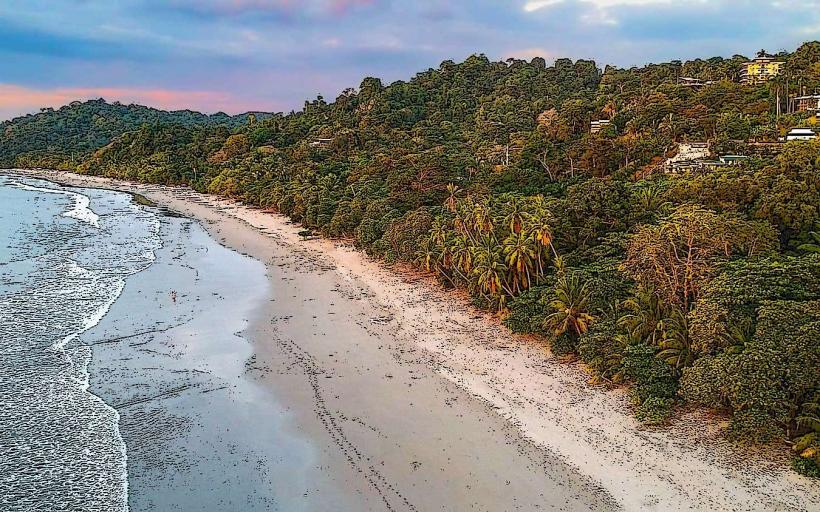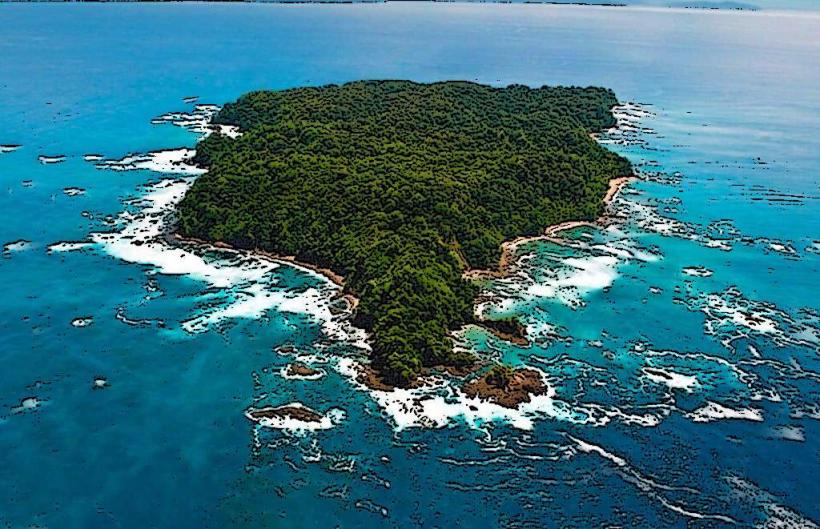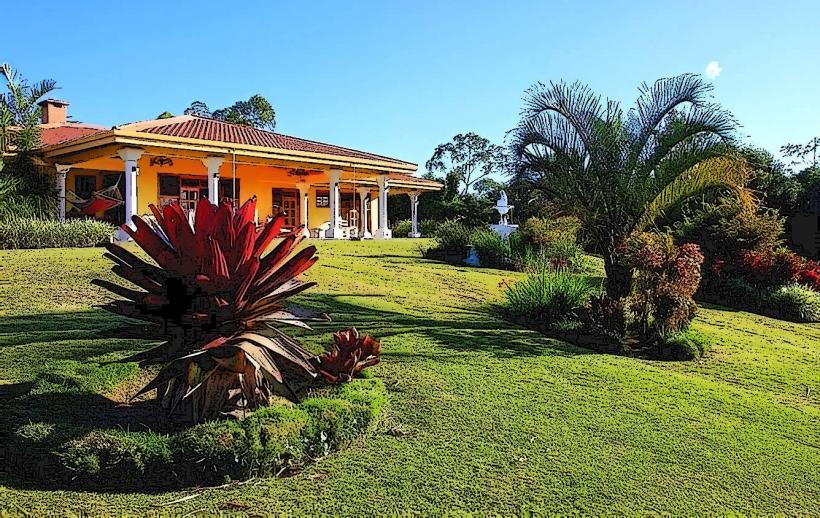Information
Landmark: Cabo Blanco Absolute ReserveCity: Puntarenas
Country: Costa Rica
Continent: North America
Cabo Blanco Absolute Reserve (Reserva Absoluta Cabo Blanco) is one of the most significant and pristine protected areas in Costa Rica, located on the southern tip of the Nicoya Peninsula in Puntarenas Province. Established in 1963, it was the first protected wildlife reserve in the country and is known for its rich biodiversity, lush forests, and beautiful coastal landscapes. Cabo Blanco plays an essential role in preserving Costa Rica's natural heritage and is an excellent destination for eco-tourism, wildlife observation, and hiking.
Overview
- Location: Cabo Blanco Absolute Reserve is situated on the southern tip of the Nicoya Peninsula, about 35 km (22 miles) southwest of Cóbano. It is easily accessible from towns like Montezuma and Santa Teresa, and visitors typically reach it via the town of Paquera.
- Size: The reserve spans approximately 1,270 hectares (around 3,140 acres), consisting of a mix of tropical dry forest, rainforest, and coastal ecosystems.
- Importance: Cabo Blanco is not only one of the oldest protected areas in Costa Rica, but it also serves as an essential conservation hub. The reserve has helped protect important habitats for local wildlife and contributes to preserving the biodiversity of the Nicoya Peninsula.
Flora and Fauna
Biodiversity:
- The reserve is home to an incredible variety of plants and animals, including many species that are threatened or endangered. The mix of tropical dry forests and rainforests provides unique habitats that support a wide array of wildlife.
- The area is home to more than 200 species of birds, such as:
- Scarlet macaws
- Toucans
- Parrots
- White-tailed kites
- The reserve is also known for its population of howler monkeys, white-faced capuchins, and various mammals, including jaguars, ocelots, and pumas. Smaller mammals like agoutis and coatis also call the reserve home.
- Reptiles such as green iguanas and crocodiles are frequently seen in the coastal areas and near rivers.
- The marine ecosystem is rich, with numerous species of fish, sea turtles, and whale sharks around the coastline.
Vegetation:
- The reserve is known for its diverse range of vegetation, including tropical dry forests on the lower parts of the peninsula and rainforests in the more elevated areas. Mangroves, cacti, and grasslands can be found throughout the reserve.
- The forests are also home to important tree species, including guanacaste trees, balsa trees, and ceiba trees, providing important ecological roles in maintaining the reserve’s ecosystems.
Main Attractions
Cabo Blanco Beach:
- The beach at Cabo Blanco is a pristine, unspoiled stretch of sand that offers spectacular views of the Pacific Ocean. Surrounded by the lush greenery of the reserve, it’s a serene place to relax and enjoy the natural beauty of the area.
- It is known for its clear waters and excellent conditions for swimming, though the currents can be strong at times, so visitors should exercise caution.
Hiking Trails:
- Cabo Blanco offers several well-maintained hiking trails, leading visitors through the lush forest to discover the reserve’s wildlife and natural beauty. The main trails are:
- The Main Trail (Sendero Principal): This is a popular trail that leads to Cabo Blanco Beach. It offers visitors the chance to explore the diverse habitats of the reserve, passing through both dry forests and rainforests, with opportunities to spot wildlife along the way.
- The Forest Trail (Sendero Bosque): A longer trail that takes visitors through deeper forest areas of the reserve. It offers a chance to observe different ecosystems and enjoy views of the surrounding landscapes.
Wildlife Watching:
- The reserve is a fantastic destination for wildlife enthusiasts. Visitors can spot a wide variety of animals along the trails or from the viewpoints. Birdwatching is particularly popular, with numerous species of birds present in the area, including the iconic scarlet macaw.
- The diverse habitats also provide opportunities for monkey sightings, turtle watching, and glimpsing various mammals, reptiles, and marine life.
Snorkeling and Diving:
- The coastline of the reserve is rich with marine life, and snorkeling or scuba diving in the area offers opportunities to see vibrant coral reefs, tropical fish, and the occasional sea turtle or dolphin. There are nearby dive shops that offer guided tours to the best spots around the reserve.
Conservation Efforts
Historical Significance:
- Cabo Blanco was founded as Costa Rica’s first absolute reserve in 1963, which means that human activities are strictly limited, and the reserve is protected from development and exploitation. This makes it one of the most well-preserved natural areas in the country.
- The reserve played a pioneering role in Costa Rica’s overall conservation movement, helping establish a network of protected areas throughout the country and influencing the creation of subsequent national parks and wildlife reserves.
Protected Area:
- As an absolute reserve, Cabo Blanco is one of the strictest conservation areas in Costa Rica. It is primarily managed by the National System of Conservation Areas (SINAC) under the Costa Rican Ministry of the Environment and Energy (MINAE). The reserve's primary goal is to preserve its natural habitats for future generations, while also providing research opportunities on ecosystems and biodiversity.
Visitor Information
Entrance Fees:
- The entrance fee to Cabo Blanco Absolute Reserve is typically $12 USD for foreign visitors. Costa Rican nationals and residents usually receive a discounted fee.
Opening Hours:
- The reserve is open daily from 8:00 AM to 4:00 PM. It is advisable to visit earlier in the day for better wildlife sightings, as many animals are more active during the morning.
Guided Tours:
- Guided tours are available and are highly recommended for those wanting to learn more about the reserve’s ecosystems and wildlife. Guides are knowledgeable about the flora and fauna and can help visitors spot hard-to-see wildlife along the trails.
Getting There:
- By Car: From Montezuma, it takes about 20 minutes by car to reach the entrance of the reserve. The roads are generally in good condition, though some areas can be gravel and bumpy.
- By Boat: There are also boat tours available from nearby beaches to explore the coastline of the reserve and nearby areas.
- Public Transport: Buses run from Cóbano to Montezuma or Paquera, and visitors can arrange for a taxi or transfer to the reserve from there.
What to Bring:
- Visitors should bring plenty of water, sunscreen, and insect repellent. Sturdy hiking shoes are recommended, as the trails can be uneven and challenging. If you plan to swim or snorkel, don’t forget to bring a swimsuit and snorkeling gear.
Best Time to Visit
- Dry Season (December to April): The best time to visit Cabo Blanco is during the dry season, from December to April, when the weather is sunny and pleasant, making it ideal for outdoor activities like hiking, wildlife watching, and beach visits.
- Rainy Season (May to November): While the green season offers lush landscapes and fewer tourists, the trails can become muddy and slippery, and some areas of the reserve may be harder to access.
Conclusion
Cabo Blanco Absolute Reserve is a must-visit destination for nature lovers and eco-tourists seeking a truly unspoiled part of Costa Rica. Its rich biodiversity, pristine beaches, and diverse hiking trails provide an exceptional opportunity to connect with nature. As one of the country’s oldest and most protected reserves, Cabo Blanco offers a glimpse into Costa Rica’s conservation efforts and is a fantastic spot to experience its natural beauty.

